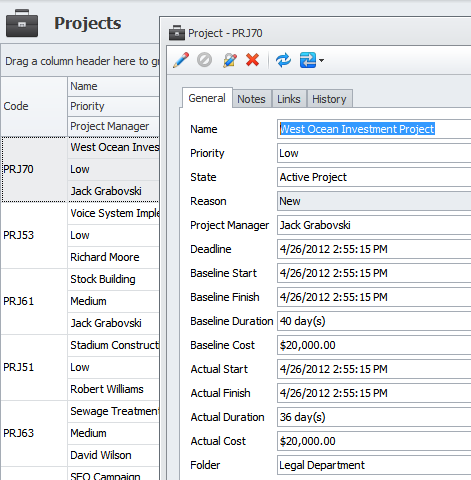 |
|
 |
VIP Task Manager |
 |
|
 |
VIP Task Manager |
|
Project closure is conclusion and finishing of a project, including settlement of all disputable matters. As a rule, project closing includes the following group of steps: finishing works on product creation; delivering project results to customer; breaking up project team; analyzing project experience and documenting. |
  Play Demo Play Demo
|
|
|
Step 1. Finishing works on product creation During project closure it is necessary to be convinced that all works are accomplished. For this purpose the project management plans measures of control aimed to carry out analysis of works, to compose a list of outstanding tasks, to draw up detailed planning of their fulfillment and to organize daily operative meetings. Sometimes project managers create separate expert group, which primary goal is to reveal remained works and complete these works. Upon finishing the project it is necessary to be convinced that:
Step 2. Delivering project results to customer The process of delivering a product to the customer includes not only actual and documentary transferring of project result to the customer but also training of users of the given product. At this step the rights to the created product and full responsibility (except for cases of guarantee certificates) are delivered to the customer. Besides, documentation needed for further operation of the created product (executive drawings, other engineering specifications) is transferred to the customer. Step 3. Breaking up project team Any project is limited in time, therefore sooner or later the manager will have to break up the project team. The team disbandment can be made as gradually by processing separate stages as simultaneously upon termination of the project as a whole. In this context we can speak about not only the project life cycle but also the team life cycle. Each stage of the team life cycle is characterized by certain signs peculiar to any project team. One of key problems the project management confronts with is maintenance of high overall performance of the project team. As practice shows, members of the team concentrate the efforts on project closure in case they are assured of the future and have accurate prospect of the further professional work. Therefore on the final phase of the project life cycle it is necessary to give special attention to an emotional condition of the team members, and disbandment procedure should be conducted carefully. |
||
|
Step 4. Analyzing project experience and documenting Despite a project succeeding or failure, it allows the project team to receive unique experience. Therefore the analysis of achievements and errors, revealing of new administrative methods become important problems of the final step of project life cycle. The choice of a method for carrying out the analysis depends on project size. Usually for small projects it is enough to organize final accounting meeting on which the post-project estimation is given. Another successful method of analysis lies in conducting interviews with representatives of the customer. The purpose of such interviews is to reveal an attitude of the customer towards the project implementation and its outcomes. Often for large-scale projects the post-project audit is preferable. In order to use learnt lessons in the future, they should be stored and documented. Storing of learnt lessons will not affect any more success of complete work, however they can play a key role for the future projects. |
||
If you use CentriQS to manage your projects, you are able to pass through all project phases successfully from initiation to closure. On the closure phase of the project CentriQS allows to determine tasks of the project manager, efficiently disband the team, learn lessons and document experience, deliver project product to the customer according to mentioned above four major steps. For example, you easily break up the project team by using Resource List view where all project participants and available roles are listed in the Resource List. |
 Play Demo Play Demo
|
|
 |
|
 |
VIP Task Manager |



